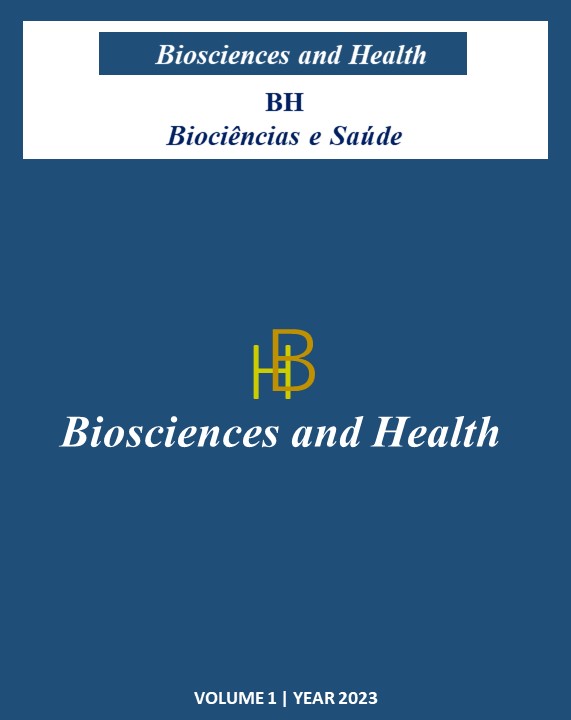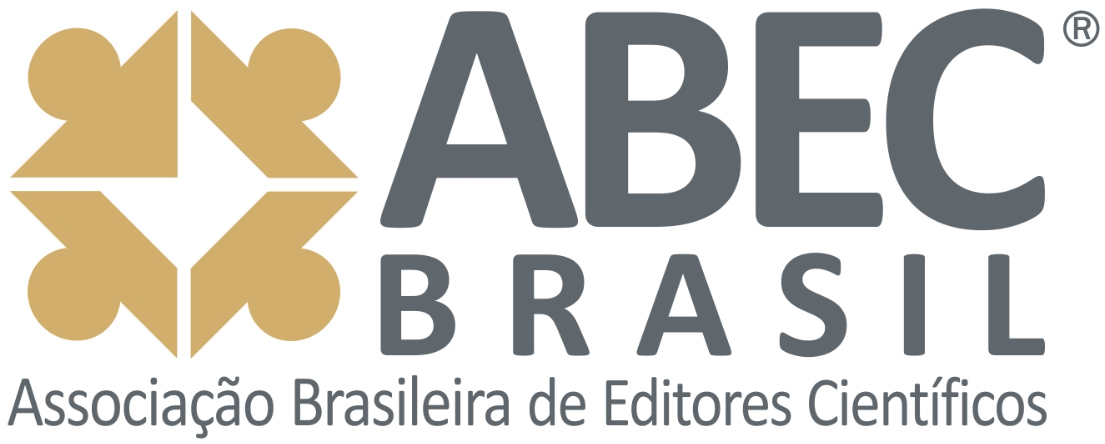Frequency of dermatophytes and yeasts in the tegument of healthy dogs and cats
DOI:
https://doi.org/10.62331/2965-758X.v1.2023.12Keywords:
Microsporum, Trichophyton, Candida, Malassezia, DermatophytosisAbstract
The objective of the research was to verify the frequency of dermatophytes and yeasts in healthy dogs and cats. For this purpose, samples of hair and desquamation of 30 cats and 30 dogs were sown on DTM medium and Sabouraud Dextrose agar enriched with yeast extract, thiamine, antibiotics (streptomycin and chloramphenicol) supplemented with cycloheximide and incubated at 25ºC and 35ºC for 10 days. Positive cultures were evaluated macro and microscopically, and the fungi identified by biochemical methods. It was found that 100% of the cats had a positive mycological culture for Microsporum canis, 33.33% for M. gypseum and 50% for Trichophyton mentagrophytes, verifying the prevalence of M.canis (p>0.001). In dogs, 86.66% were positive for M. canis, with prevalence over other fungal species (p<0.001). Malassezia pachydermatis was isolated in 50% of the evaluated dogs, however it was not found in cats, since positive cultures for Malassezia spp were found in 6.6% of the cats and in 26.66% of the dogs. Candida albicans isolated from samples of dogs and cats (26.66% and 33.33%, respectively). The results of this study showed that asymptomatic dogs and cats are carriers of dermatophytosis and dermatomycosis agents, and may be important sources of environmental contagion and intra and interspecific infection.
References
Farias MR, Condas LAZ, Ramalho F, Bier D, Muro MD, Pimpão CT. Evaluation of the asymptomatic carrier state of dermatophytes in cats (Felis catus-Linnaeus, 1793) destined to adoption in zoonoses control centers and animal protection societies. Veterinária e Zootecnia. 2011; 18(2):306-312. Available from: https://www.researchgate.net/publication/232612317_Avaliacao_Do_Estado_De_Carreador_Assintomatico_De_Fungos_Dermatofiticos_Em_Felinos_Felis_Catus-_Linnaeus_1793_Destinados_A_Doacao_Em_Centros_De_Controle_De_Zoonoses_E_Sociedades_Protetoras_De_Animais
Prescott JF. Veterinary Microbiology and microbial disease. Can Vet J. 2003; 44(12):986. Available from: https://www.ncbi.nlm.nih.gov/pmc/articles/PMC340368/
Tortora GJ, Funke BR, CASE CL. Microbiology. 12a ed. Porto Alegre: Artmed; 2017.
Ramos RR, Kozusny-Andreani DI, Fernandes AU, Baptista M da S. Photodynamic action of protoporphyrin IX derivatives on Trichophyton rubrum. An Bras Dermatol. 2016; 91(2):135-140, 2016. https://doi.org/10.1590/abd1806-4841.20163643
Cabañes FJ. Dermatophytes in domestics animais. Revista Hiberoamericana de Micologia. 2000; 17:104-108. Available from: https://portalrecerca.uab.cat/en/publications/dermatophytes-in-domestic-animals-2
Menelaos LA. Dermatophytes in dog and cat. Buletin of University of Agricultural Sciences and Veterinary Medicine Cluj-Napoca. 2006; 63:304-308. https://doi.org/10.15835/BUASVMCN-VM:63:1-2:2499
Hirsh DC, Zee YC. Veterinary Microbiology. Rio de Janeiro: Guanabara Koogan; 2003.
Gangil R, Dutta P, Tripathi R, Singathia R, Lakhotia RL. Incidence of dermatophytose in canine cases apresented at Apollo Vetrinary College, Rajashtan, India. Veterinary World. 2012; 5(11):682-684. https://doi.org/10.5455/vetworld.2012.682-684
Mihaylov G, Petrov V, Zhelev G. Comparative investigation on several protocols for treatment de dermatophytoses in pets. Trakia Journal of Science. 2008; 6:102-105. Available from: https://agris.fao.org/agris-search/search.do?recordID=BG2008000528
Frias DFR, Kozusny-Andreani DI. Isolation and identification of fungi is associat of dermatophytosis and dermatomicosis on dogs. Revista CES/Medicina Veterinária y Zootecnia. 2008; 3(2):58-63. Available from: https://revistas.ces.edu.co/index.php/mvz/article/view/288
Palumbo MIP, Machado LHA, Paes AC, Mangia SH, Motta RG. Epidemilogic survey of dermatophytosis in dogs and cats attended at the dermatology service of the College of Veterinary Medicine and Animal Science of UNESP - Botucatu. Semina: Ciências Agrárias, 2010; 31(2):459-468. https://doi.org/10.5433/1679-0359.2010v31n2p459
Cardoso NT, Frias DFR, Kozusny-Andreani DI. Isolation and identification of fungi present in healthy dogs' hair and in dogs with symptoms of dermatophytosis in the city of Araçatuba, São Paulo. Archives of Veterinary Science. 2013; 18(3):46-51. http://dx.doi.org/10.5380/avs.v18i3.28975
Mancianti F, Nardoni S, Cecchi S, Taccini F. Dermatophytes isolates from symptomatics dogs and cats in Tuscany, Italy during a 15-year-period. Mycophatologia. 2002; 156:13-18. https://doi.org/10.1023/a:1021361001794
Beraldo RM, Gasparoto AK, Siqueira AM, Dias ALT. Demattophytes in household cats and dogs. R Bras Ci Vet. 2011; 18(2/3):85-91. http://dx.doi.org/10.4322/rbcv.2014.125
Ribeiro SMM, Sousa SKSA, Galiza L, Pereira EC, Couceiro GA, Meneses AMC. Retrospective study of dermatophytosis in dogs and cats attended at Veterinary Hospital of University Federal Rural da Amazônia. Research, Society and Development. 2021; 10(5):e51110515044. https://doi.org/10.33448/rsd-v10i5.15044
Moriello KA. Treatment of dermatophytosis in dogs and cats: review of published studies. Vet Dermatol. 2004; 15(2):99-107. https://doi.org/10.1111/j.1365-3164.2004.00361.x
Quinn PJ, Markey BK, Leonard FC, Fitzpatrick ES, Fanning S, Hartigan PJ. Veterinary microbiology and microbial disease. 2nd ed. Lowa, USA: Wiley-Blackwell; 2011.
Kurnatowska A, Kurnatowski P. Metody diagnostyki laboratoryjnej stosowane w mikologii [The diagnostic methods applied in mycology]. Wiad Parazytol. 2008; 54(3):177-185. Available from: https://pubmed.ncbi.nlm.nih.gov/19055058/
Kozel TR, Wickes B. Fungal diagnostics. Cold Spring Harb Perspect Med. 2014; 4(4):a019299. https://doi.org/10.1101/cshperspect.a019299
Alterthum F. Microbiology. 6ª ed. São Paulo: Atheneu; 2015.
Procop GW, Church DL, Hall GS, Janda WM, Koneman EW, Schreckenberger PC, et al. Microbiological diagnosis - text and color atlas. Rio de Janeiro: Guanabara Koogan; 2018.
Kindo AJ, Sophia SK, Kalyani J, Anandan S. Identification of Malassezia species. Indian J Med Microbiol. 2004; 22(3):179-181. Available from: https://pubmed.ncbi.nlm.nih.gov/17642728/
Hamdino M, Saudy AA, El-Shahed LH, Taha M. Identification of Malassezia species isolated from some Malassezia associated skin diseases. J Mycol Med. 2022; 32(4):101301. https://doi.org/10.1016/j.mycmed.2022.101301
Silva FASE, Azevedo CAV. Principal components analysis in the software assistat-statistical attendance. In: World congress on computers in agriculture. 7th ed. Reno: American Society of Agricultural and Biological Engineers; 2009.
Cafarchia C, Romito D, Capelli G, Guillot J, Domenico O. Isolation of Micropsporum canis for hair coat of pet dogs and cats belonging to owners diagnosed with M. canis tinea corporis. Veterinary Dermatology. 2006; 17(5):327-331. https://doi.org/10.1111/j.1365-3164.2006.00533.x
Pascoli AL, Bortolatto AC, Reis Filho NP, Ferreira MGPA, De Nardi AB. Dermatophytosis caused by Microsporum canis and Microsporum gypseum: literature review. Medvep Dermato - Revista de Educação Continuada em Dermatologia e Alergologia Veterinária. 2014; 3(9);206-211. Available from: https://pesquisa.bvsalud.org/portal/resource/pt/vti-11264
Smaniotto MD, Botelho TKR. Incidence of dermatophytes in dogs in the period from january 2016 to january 2018 in a veterinary laboratory of clinical analisis in the city of Chapecó - SC. Rev Bras Anal Clin. 2019; 51(4):328-334. Available from: https://pesquisa.bvsalud.org/portal/resource/pt/biblio-1104016
Romani AF, Rodrigues RPC, Amaral AVC, Ramos DGS, Oliveira PG, Meirelles-Bartoli RB, et al. Importance of fungal culture in the diagnosis of dermatophytosis in companion animals. Research, Society and Development. 2020; 9(9):e312997014. http://dx.doi.org/10.33448/rsd-v9i9.7014
Downloads
Published
How to Cite
Issue
Section
License
Copyright (c) 1969 Journal of Biosciences and Health

This work is licensed under a Creative Commons Attribution 4.0 International License.









